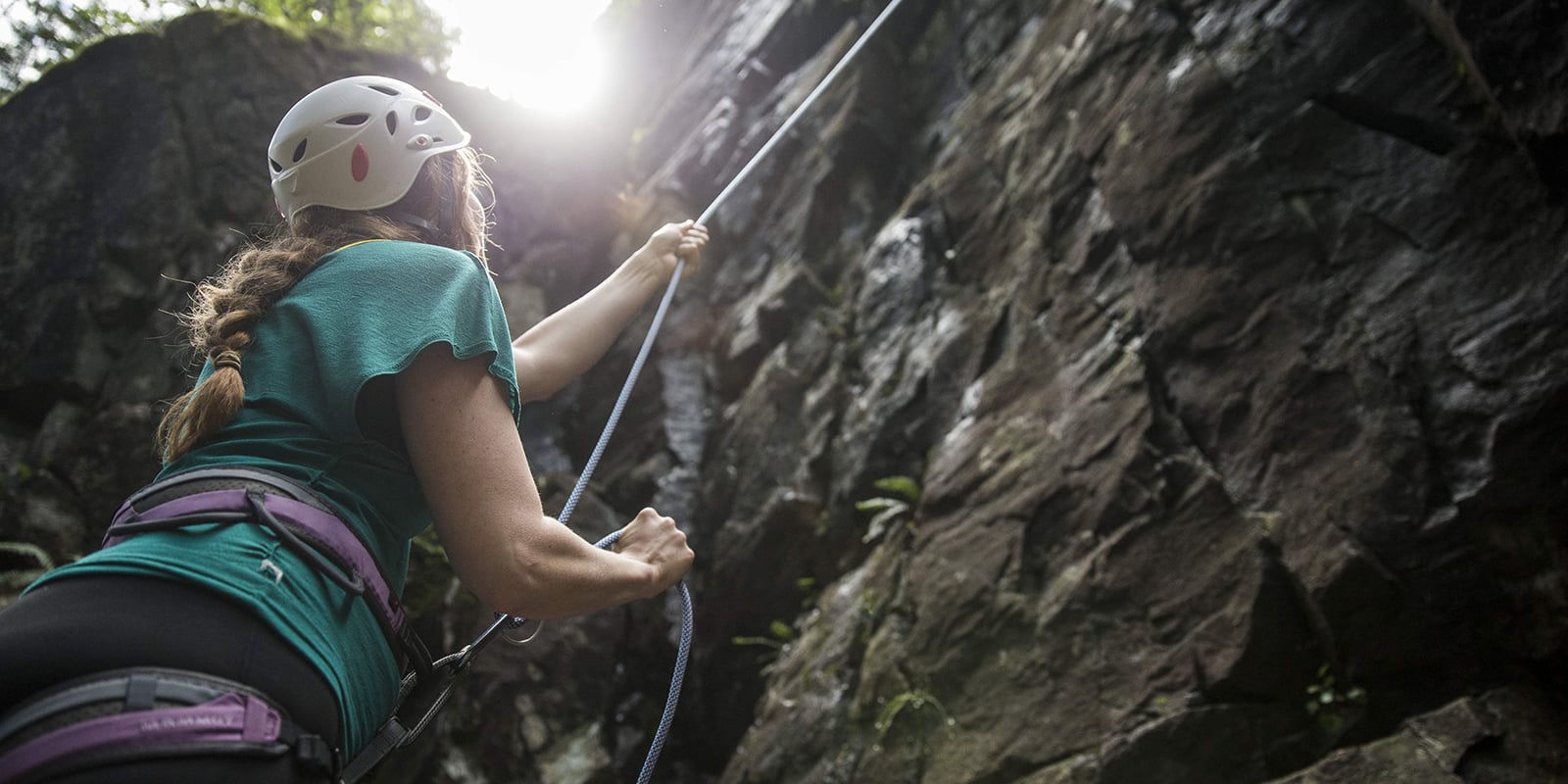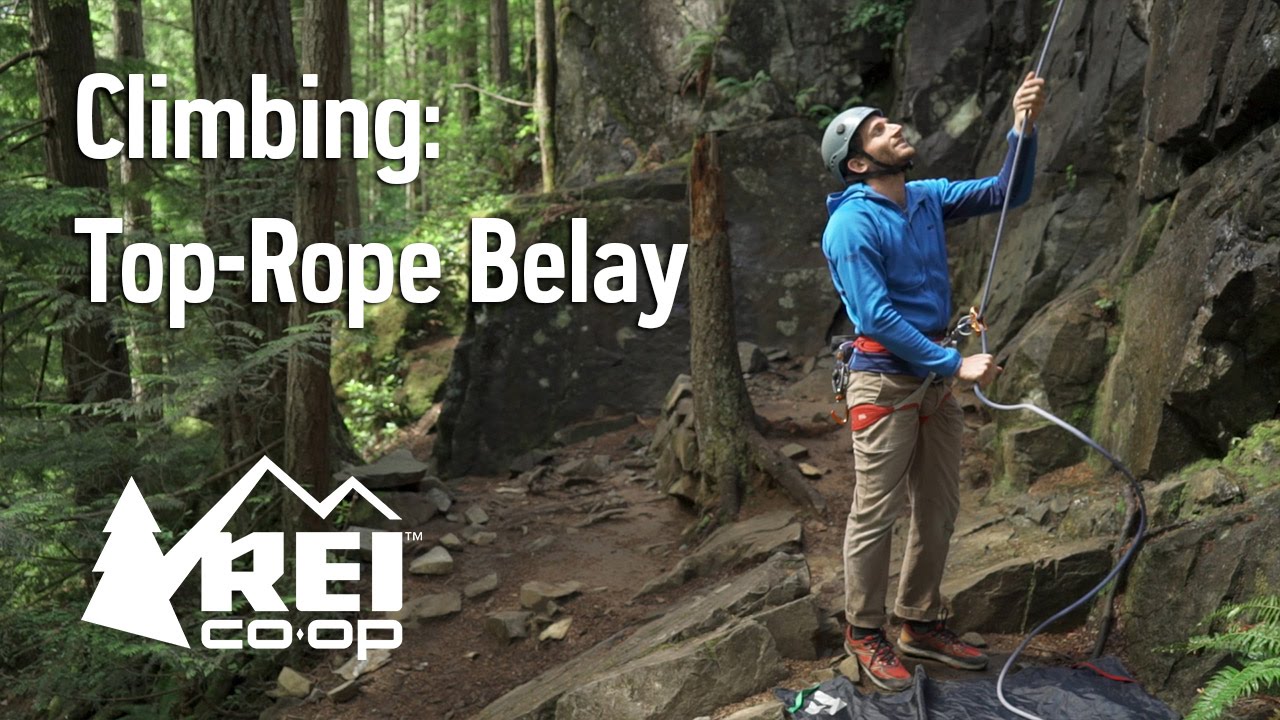Belaying in rock climbing is the technique of controlling the rope to protect the climber from falling. Belaying is crucial in rock climbing for ensuring the climber’s safety while ascending or descending the rock face.
By using a belay device, the rope is threaded through it and links to the climber’s harness. As the climber ascends, the belayer takes in the extra rope and catches the climber if they fall. Similarly, when descending, the belayer slowly lowers the climber down to the ground.
Belaying requires skill and attentiveness from the belayer as a minor mistake can lead to a fall and injury. Proper belaying is an essential part of rock climbing and is a critical part of any climbing course.

Credit: www.rei.com
What Is Belaying In Rock Climbing?
Definition Of Belaying In Rock Climbing
Belaying is a crucial technique in rock climbing. It is a safety measure that involves controlling the rope connected to the climber, ensuring that they are protected if they fall while climbing. During ascent, the belay device is used to create resistance that stops the rope from sliding through the anchor.
Belaying requires a partner to protect the climber’s safety and should never be done solo.
Importance Of Belaying In Rock Climbing
Using proper belaying technique is essential for safe and effective rock climbing. Some reasons why belaying is important in rock climbing include:
- Safety: Belaying helps prevent injuries and accidents by protecting climbers from falling long distances and hitting the ground.
- Control: Belaying gives the belayer control over the rope, making it easier to manage the climber’s movements and adjust for any unforeseen factors or changes in the climb.
- Communication: Belaying requires clear communication between the climber and the belayer, thus improving teamwork.
Different Methods Of Belaying In Rock Climbing
There are several methods of belaying in rock climbing. Some of these methods include:
- Top-rope belaying: One of the most common techniques in rock climbing, top-rope belaying involves setting up the rope above the climb before the climber begins. This provides a consistent and secure anchor for the climber to use.
- Lead belaying: This technique involves the leader climbing the route first, with the rope anchored to the rock as they progress. As the leader climbs higher, the rope is clipped to bolts along the way, and the belayer provides slack for the climber.
- Auto-locking belaying: This technique uses a self-locking device that automatically locks the rope if a certain amount of force is exerted. It provides additional safety features that help prevent the climber from falling in the event of an accident.
- Multi-pitch belaying: This technique is used for long climbs that require several belay stations. As the climber reaches each station, the belayer sets up the rope at a new anchor point.
Mastering belaying techniques is crucial for rock climbers. It is a safety measure that can prevent accidents and injuries while climbing. By understanding what belaying is, its importance in rock climbing, and the various methods of belaying, climbers can improve their safety and performance on climbs.
The Basics Of Belaying In Rock Climbing
Rock climbing is a thrilling sport that involves physical, mental, and technical skills. One of the most important techniques in rock climbing is belaying. Belaying is a vital process that safeguards the climber from falls or injuries. In this blog, we will explore the basics of belaying in rock climbing, including the necessary equipment, belaying techniques, and how to choose the right technique based on your climbing level.
Equipment Required For Belaying In Rock Climbing
Before you embark on a rock climbing excursion, you need to gather some essential equipment for belaying. Here are some of the necessary items:
- Climbing rope: A dynamic rope with a diameter of 9mm to 11mm is ideal for rock climbing. You should choose a rope that matches the level of climbing you plan to undertake.
- Harness: This is an integral part of your rock climbing gear that holds your body weight and connects you to the rope.
- Belay device: A device that helps control the rope’s friction and facilitates smooth belaying.
- Carabiner: This is a metal loop with a spring gate that connects the belay device to your harness.
- Helmet: When you’re climbing, you need to protect your head from falling rocks or any other hazard.
Understanding Belaying Techniques: Top Rope, Lead Climbing, Multi-Pitch Climbing
Belaying techniques vary depending on the type of climbing you are undertaking. There are three primary belaying techniques:
- Top rope belaying: In top rope belaying, the rope runs through an anchor system at the top of the climbing route, and the belayer controls the rope’s slack from the bottom. This is a suitable technique for beginners as the climber faces fewer risks and hence feels more secure.
- Lead climbing belaying: Unlike top rope belaying, lead climbing requires the climber to ascend the route by attaching safety gear to the wall as they climb. As the lead climber progresses, the rope gets clipped into the safety gear, while the belayer controls the slack. This technique demands a higher level of experience and is best suited for intermediate and advanced climbers.
- Multi-pitch climbing belaying: This technique requires the climber to ascend several climbing pitches, with each pitch ending at an anchor point. The belayer controls the rope’s slack from the anchor point at the top while the climber transitions to the next pitch. This technique is for advanced climbers and requires significant technical expertise.
Choosing A Suitable Belaying Technique Based On Climbing Level
Choosing the right belaying technique is critical for your safety and the success of your climbing expedition. Here are some things to consider when deciding on the most suitable belaying technique:
- Climbing experience: Beginners are better off starting with top rope belaying, while intermediate and advanced climbers can try lead or multi-pitch climbing.
- Climbing route: Certain routes are better suited to a specific technique. For example, routes with fewer or no anchor points are best approached using lead climbing techniques.
- Climbing partner: Your climbing partner’s level of experience and familiarity with belaying techniques can help determine the most suitable technique for your climb.
Belaying is an essential skill in rock climbing that can spell the difference between life and death. By understanding the basics of belaying in rock climbing, determining the necessary equipment, understanding the different belaying techniques, and selecting the right technique based on your level of experience, you can enjoy a safe and satisfying rock climbing experience.
Frequently Asked Questions Of What Is Belaying In Rock Climbing?
What Is Belaying In Rock Climbing?
Belaying is the technique used to control the rope during a climb, ensuring safety.
What Is A Belay Device?
A belay device is a piece of equipment used to control the rope when belaying, offering friction and/or locking mechanisms.
Why Is Belaying Important In Rock Climbing?
Belaying is essential in rock climbing to ensure the climber’s safety by controlling the rope’s movement during the climb.
Conclusion
To sum it up, belaying is a crucial aspect of rock climbing that ensures the safety of the climber and the belayer. It is a technique that involves controlling the rope to support the climber’s weight, arrest falls, and lower the climber back to the ground safely.
As a belayer, it is essential to stay alert, communicate well, and have a thorough understanding of the available equipment and the climbing environment. The type of belay device you use and how you use it also plays a crucial role in ensuring a smooth and safe climb.
Whether you are a beginner or an experienced climber, mastering belaying will enhance your climbing experience and open up a world of possibilities. So, keep practicing, keep learning, and always prioritize safety while enjoying the thrill and beauty of rock climbing.
Happy climbing!




